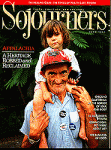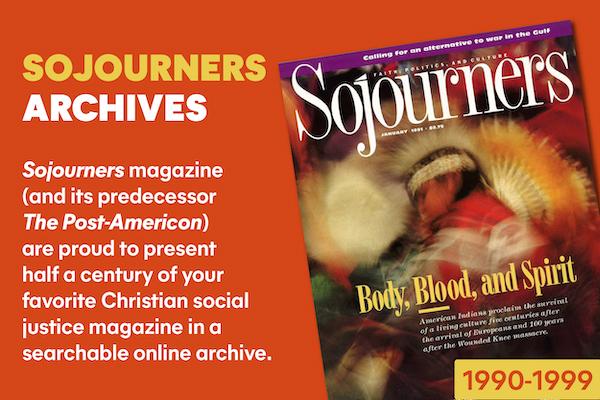The TV news crews were in place. The minivans fanned out across Los Angeles with their hydraulic microwave transmitters staring into the sky and gaggles of nervous reporters flocking to First A.M.E. Church in the Crenshaw district, to Koreatown's strip malls, to the Latino barrio of Pico-Union, to the infamous corner of Florence and Normandie ("ground zero" of last year's uprising), to the LAPD's headquarters, and to the National Guard staging area where the boys were hunkered down with their M-16s.
At a little after 7 a.m. on April 17, the mixed verdicts were read and immediately aired throughout the city and the country. Guilty. Guilty. Not guilty. Not guilty. The camera lights glared, the tape rolled. Reporters literally stumbled over each other looking for the "reaction." And of course there was none. The city was quiet. The sun even poked through a typically foggy April sky later in the day and the stores in practically every neighborhood hit by last year's violence opened without incident.
Given the media's endless preparations to cover LA like war correspondents over Bosnia, there surely must have been some disappointment among the TV news producers. Headlines like "City on Edge"--replete with ominous synthesizer for soundtrack--were a daily ritual. Rumors abounded. Inner-city gangs would attack Beverly Hills. Snipers would gun down LA's finest.
Another favorite story was the Korean store owners arming themselves for armageddon--never mind that white suburban vigilantes were just as well armed. No surprise. The media, in the end, faithfully replicates LA's race and class divisions, the essence of its conflict. TV news splits the city between the largely white suburbs and the black-brown-yellow inner city, and clearly holds the former's point of view: The inner city is to be feared.
Local political forces have split along the same lines. The media's riot buildup coincided with a largely ignored mayoral race, the first in 20 years with no incumbent. Candidates such as millionaire Perot-stand-in Richard Riordan played to white fears of crime by placing public safety at the top of the agenda; then there were the interethnic coalition builders like councilman Michael Woo who promised to revitalize the inner city. The term "balkanized" entered the lexicon here long ago; today it is both cliché and understatement.
Los Angeles stands as a powerful symbol for the entire country. It is not alone in its class tension and ethnic divisiveness. It's just that things have come to the fore here because, as the other cliche about the city goes, LA is just like any other city, except more so. The rich are exorbitantly rich, the poor excruciatingly poor.
If there was one reason to believe the hype about the possibility of renewed rioting, it was the fact that the city has done virtually nothing to address the economic depression that has devastated the inner city and served notice to the slipping middle class that California's glory days of aerospace and automobiles are long gone. For the black and Latino inner city, the Rodney King video served not just as a symbol of rampant police abuse that has historically known no redress; it was also a graphic sign of economic assault on people of color.
THE FACT THAT last year's uprising spread to Pico-Union, a Salvadoran and Mexican barrio north of South-Central and west of downtown, underscores the class dimensions of the conflict. The recently arrived immigrants of Pico-Union live in the most densely populated census tract in the United States. Housing is deficient, jobs scarce, police abuse and INS raids are facts of daily life. More Latinos than African Americans were arrested in the rioting. The fact that a legally vulnerable population would be involved in illegal activity--i.e., looting and arson--speaks to a frustration and rage powerful enough to overcome the fear of arrest and deportation.
And yet there is a possible city that has emerged from the ruins of April 1992. It is a city of energetic immigrants from Asia and Latin America who, despite the lack of corporate interest in the inner city, have created an alternative economy of small business similar to the immigrant East Coast of the turn of the century--corner stores and street vendors.
There is the possible city of LA's vibrant youth culture, in which hip-hop teens of all races dialogue through rap and graffitti art. And there is a possible city being created at the neighborhood level, where community-based organizations are beginning to flower, since people have finally begun to understand that help from the outside is either late in arriving or might never arrive at all. The inner city's gang truce is testament to a spirit of self-determination determined to rise above the temptation to fall into despair or internecine self-destruction.
But there remains the competition from the other possible LA, in which blacks and Latinos bicker over meager resources or direct their rage at Asian merchants. In this version of LA, white and middle-class Angelenos fear and loathe the crucible of the inner city.
The media would do well to dwell less on possible riots and more on the day-to-day decisions that affect jobs, education, and health care. The real violence in Los Angeles is the kind that takes place every day a student walks into an overcrowded classroom, each time a corporation heads for Mexico, each time a gun is bought and sold, every time a politician panders to our basest fears.
The battle for the soul of this city is on. And which city winds up victorious is not just a concern for us. It is the country's future that is at stake.
Ruben Martinez was news editor for the LA Weekly and the author of The Other Side: Fault Lines, Guerrilla Saints and the True Heart of Rock 'n' Roll when this article appeared.

Got something to say about what you're reading? We value your feedback!
